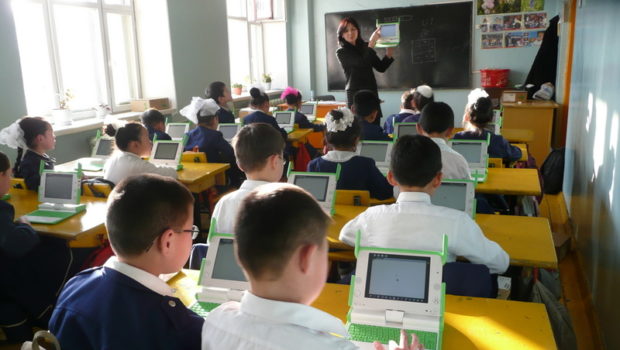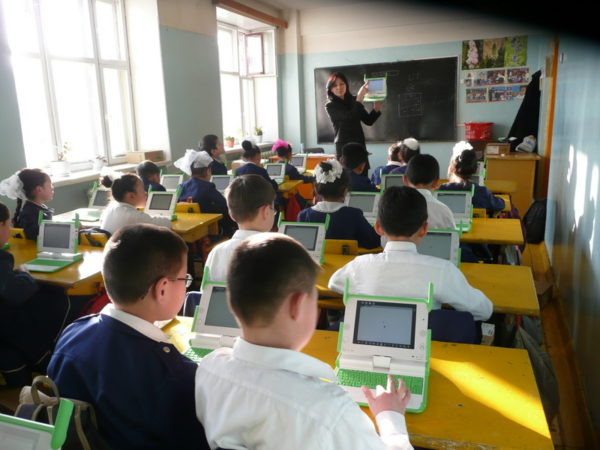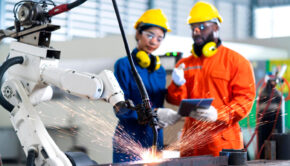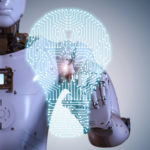How modern technology has influenced literacy
Over the past 30 years, intensity of the information flows increased more than 15 times. The representatives of education sphere were forced to use modern technologies for the collection and processing of data. As a result, a positive correlation between technology and literacy was observed.
Trends in the development of education
A computer connected to the Internet provides students with a huge number of databases, information from around the world, allows to make learning more individualized, close to real life conditions. There is a need for constant improvement of the higher education concept. The main goals and objectives:
- development of modern technological training;
- formation of a new information culture of thinking through the individualization of academic activities, the diversity of their forms;
- ensuring a sustainable evolution of society through education.
Over time, the teacher ceases to be a source of knowledge and becomes a coordinator. The main task of the pedagogue is to help the students in solving the problems that have arisen in the learning process. It is believed that independent training with the use of modern technologies is much more effective than traditional scheme. Such method is already successfully applied in many progressive universities.
However, there is an opinion that mobile devices (tablets and smartphones) are used primarily for entertainment and distract children from learning. But people forget that even games for mobile gadgets can perform an educational role. Moreover, with the help of modern technologies, students can immerse themselves in the training process and have a direct influence on it. For example, homework on biology can turn into a small research work with the use of photo or video. Students can also write all sorts of scripts or create instructional videos.
How does technology affect education?
Let’s consider those areas where information technologies have already shown their potential at improving the quality of education.
Computer modeling
Of course, visual aids still play an important role in education. However, not everything can be demonstrated for several reasons:
- macro or mini size;
- transience or long duration of a particular process or phenomenon;
- complexity or danger of experiment.
Digital simulators and ready-made 3D models can help teachers explain the most complex concepts. Students can conduct their own research in virtual laboratories and write any research paper about technology on its basis, simulate different processes which may be represented only in large research centers, can be dangerous in a real situation or require special conditions.
Global education
Many people understand this concept only as studies abroad. Meanwhile, without leaving the most remote village, a student can “attend” university situated in any country of the world, learn a foreign language with a native speaker, and communicate with the best teachers.
Virtual calculations
Let’s suppose that you study some mathematical topic. During the lesson you build graphs, charts, but you need to spend a lot of time to consider the results of the calculations with other figures. Online calculators will do this work in a few moments. Such applications build graphics and mathematical models. Saving time will provide an opportunity to delve into the study of other topics.
Cameras and sensors of observation
Real-time data collection provides a wide range of educational opportunities. You can trace the eruption of volcanoes by collecting information from sensors, visit breathtaking sights, check the weather around the world, perform your own analyzes, compile charts and predictions.
Effective estimation
Virtual experiments and modeling can become a powerful educational tool. However, often the learning process is at an impasse. Pupils need the help of a teacher who could accompany them and constantly track the training.
This is not a simple statement of the knowledge or ignorance of the student. In real time, the pedagogue can see what results each person achieved, what problems he faced, how to build an individual learning strategy in order to achieve a good final effect.
Multimedia projects
Project activities which are extremely popular today require real incarnations. Pupils are motivated by the fact that classmates will see the result of their work. Multimedia technology helps to go beyond the classroom. This is not a written essay or a report that will be barely noticeable. The multimedia project forces students to take more responsible decisions on its implementation.
Didactic games
The digital didactic games should accompany the young people throughout the training process: from the simplest to the most complex role-playing and business games where the student can perform the role of an architect, journalist, engineer, where he will solve real problems that may occur in future professional practice.
Modern didactic games should promote the formation of innovative thinking and not just present information in the form of tests with incorrect and correct answers.
Electronic textbooks
The electronic textbook was originally developed for distance learning. To date, modern schools have abandoned the usual teaching aids and switched to e-books. It’s not surprising because such literature has a number of advantages. Let’s look at them in more detail:
- Advanced search. The electronic textbook has a quick search function. You can find the needed information without any hassle.
- Using an electronic textbook, the student is able to independently select the information he needs in the form of hypertext. This function provides better memorizing of educational material.
- Multimedia. The electronic book not only has the ability to display text. There are also bright illustrations, atmospheric music, interesting video lessons. Such additions allow to increase the quality level of training, to interest the student. Studies have shown that the concentration on the educational material increased by 35% owing to electronic textbooks.
- The e-book has the function of testing the knowledge after each learned block of material. You can check your memory and eliminate knowledge gaps, prepare for the test or exam.
We hope that it was interesting for you to find out about positive effects of technology in schools. Further introduction of innovations should contribute to popularization of education and its accessibility for all segments of the population.

















